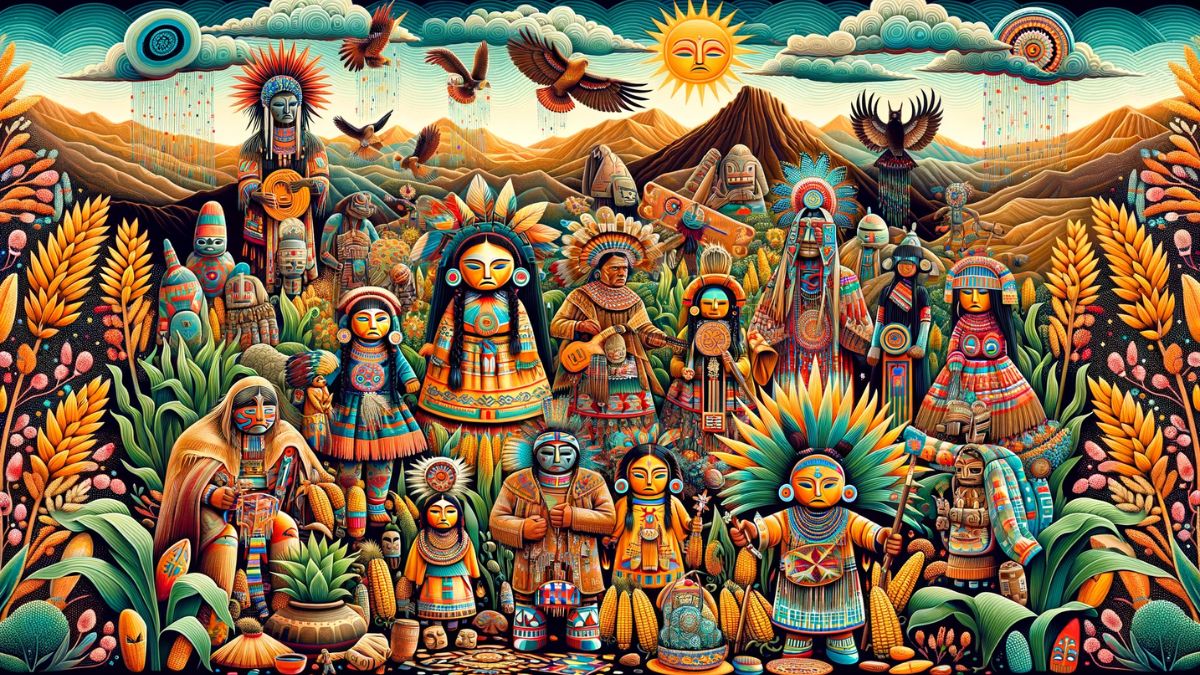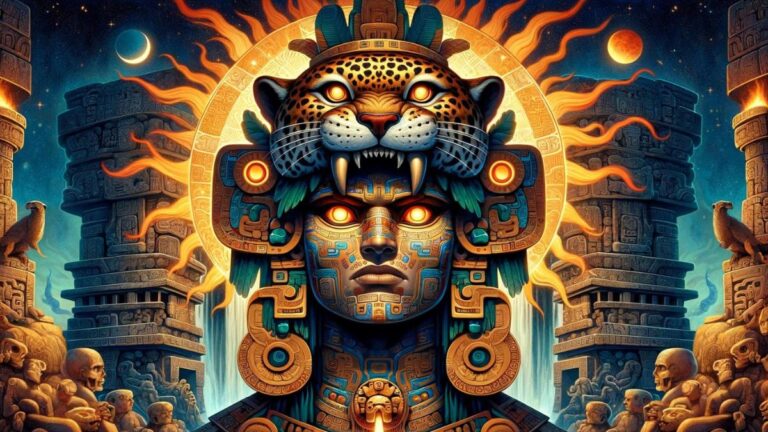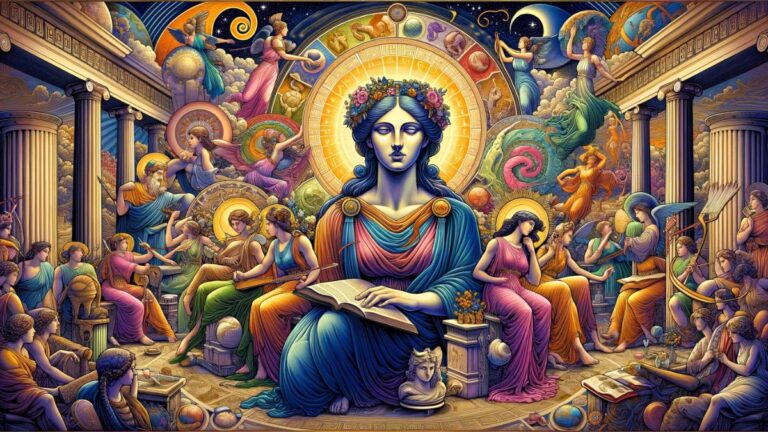Pueblo Spirits: Kachinas in the Mythology of the Southwest Tribes

Kachinas play a vital role in the culture and beliefs of Southwest Tribes, notably the Pueblo people. These spiritual beings, deeply rooted in tradition, are more than just myths or legends; they are central to the daily life and ceremonies of the people. They bridge the human world and the spiritual realm, bringing messages, guidance, and blessings. This article delves into the fascinating world of Kachinas, exploring their significance, stories, and enduring presence in the Pueblo culture.
Understanding Kachinas: The Basics
Kachinas are spiritual beings in Pueblo culture, embodying the spirits of living things and ancestors. Central to the belief system of tribes such as the Hopi and Zuni, these spirits are believed to reside in the San Francisco Peaks in Arizona. Kachinas are not gods but intermediaries between humans and the spiritual world, responsible for rain, harvest, healing, and protection. They are deeply respected and often depicted in various forms, from dolls to masks, embodying a multitude of spirits, each with a unique identity and purpose. Their presence is celebrated in numerous ceremonies throughout the year, marking significant seasonal events and transitions in the Pueblo calendar.
The understanding of Kachinas is not just about recognizing their forms but also about appreciating their profound spiritual significance. Every Kachina has a distinct role, from the Soyoko, who teach discipline, to the benevolent Hemis, symbolizing a bountiful harvest. These spirits are honored through dances, offerings, and rituals, reflecting the deep connection the Pueblo people have with the natural world. For the Pueblo, Kachinas are not mythical figures from the past; they are vibrant, essential aspects of their living culture, guiding and influencing their daily lives.
The Role of Kachinas in Pueblo Ceremonies
Kachinas play a pivotal role in Pueblo ceremonies, serving as a bridge between the spiritual and the human worlds. The ceremonies, often involving dances and rituals, are occasions for the community to come together, reinforce social bonds, and pass down traditions. During these ceremonies, participants wear elaborate costumes and masks, transforming into the Kachinas they represent. This transformation is not just a performance; it is a profound spiritual experience where the dancers are believed to embody the spirits themselves, becoming mediums for their messages and blessings.
These ceremonies are essential for maintaining harmony and balance in the community. They mark important seasonal transitions, like planting or harvest times, and invoke the Kachinas’ blessings for rain, fertility, and prosperity. The dances are highly choreographed, each step and movement carrying deep symbolic meaning. The sound of drums and the rhythm of the chants further elevate the spiritual atmosphere, creating a powerful communal experience. Through these ceremonies, the Pueblo people reinforce their connection to the ancestral spirits, the natural world, and each other.
Varieties of Kachinas: Forms and Functions
There is a remarkable diversity in the forms and functions of Kachinas within Pueblo culture. Each Kachina has a unique appearance, role, and symbolism. For instance, the Hemis Kachina, recognized by its large, elaborate headdress, symbolizes growth and fertility, vital for agrarian societies. The Kokopelli, often depicted as a humpbacked flute player, is seen as a harbinger of spring and a bringer of fertility. The diversity reflects the Pueblo people’s rich and detailed understanding of the natural world and its many facets.
This variety also extends to their functions, which range from teaching and warning to blessing and healing. The fearsome Soyoko Kachinas, for example, teach children respect and discipline. On the other hand, the Clown Kachinas, with their humorous antics, remind the community of the importance of humility and laughter. Each Kachina serves a specific purpose, addressing different aspects of life and community needs. They collectively embody the Pueblo people’s values, beliefs, and their intimate connection with the environment around them.
Kachinas in Art and Craftsmanship
Kachinas hold a special place in Pueblo art and craftsmanship, most notably in the form of Kachina dolls. These dolls are not mere toys; they are sacred objects, used for teaching about the various Kachinas and their significance. Crafted with immense skill and care, these dolls are made from cottonwood root and intricately painted to represent specific Kachinas. The artistry involved is a form of reverence, a way of honoring the spirit each doll represents.
Apart from dolls, Kachinas also inspire other forms of art, such as pottery, textiles, and murals. These artworks often depict Kachina figures and scenes from ceremonies, capturing the essence and vitality of these spiritual beings. The artists, deeply connected to their cultural heritage, imbue each piece with a sense of history and spirituality. Through these artistic expressions, the rich legacy of Kachina beliefs is both preserved and celebrated, connecting past generations with the present and future.
Stories and Legends Surrounding Kachinas
The stories and legends surrounding Kachinas are as varied as the spirits themselves, each narrating different aspects of the Pueblo worldview. These tales often explain natural phenomena, moral values, or the origins of the Kachinas. For instance, the story of the Corn Maiden Kachina illustrates the importance of corn to the Pueblo people and the spirit’s role in ensuring a bountiful harvest. Another popular tale involves the trickster Coyote, often appearing in Kachina lore, teaching lessons about wisdom and folly.
These stories are not just entertainment; they are educational tools, imparting lessons and values to younger generations. They are often told during ceremonies or quiet winter evenings, providing insights into the complex relationships between humans, nature, and the spiritual realm. The legends of the Kachinas help to keep the cultural fabric of the Pueblo people tightly woven. Through these narratives, children learn about respect for the environment, the importance of community, and the sacredness of their traditions. The stories also serve as a reminder of the ancestral knowledge and the continuity of their cultural heritage, ensuring that the teachings of the elders are passed down through generations.
Moreover, these legends highlight the interconnectedness of all life, a core principle in Pueblo philosophy. Kachina stories often feature animals, plants, and natural elements, emphasizing their vital roles in the world. This storytelling tradition not only preserves the rich tapestry of Pueblo mythology but also reinforces the community’s deep-rooted connection to the Earth and its cycles. The Kachinas, through these stories, become living symbols of this harmonious relationship, guiding the Pueblo people in their journey through life.
The Evolution of Kachina Beliefs Over Time
Kachina beliefs have evolved over time, adapting to changes in the world while maintaining their core significance. Initially, these beliefs were centered around direct interactions with the natural and spiritual worlds. However, with the arrival of European influences and the changing dynamics of the modern world, some aspects of Kachina practices have transformed. This evolution is seen in the way ceremonies are conducted, the styles of the Kachina dolls, and the incorporation of new materials and techniques in their creation.
Despite these changes, the fundamental essence of Kachina beliefs remains intact. The Pueblo people have shown remarkable resilience, preserving their traditions while navigating the challenges of external influences and modernity. This adaptability highlights the dynamic nature of their culture, demonstrating an ability to maintain spiritual and cultural integrity in the face of change. The evolution of Kachina beliefs is a testament to the enduring strength and relevance of these spiritual practices in contemporary Pueblo life.
Kachinas and Their Impact on Pueblo Community Life
Kachinas significantly impact Pueblo community life, influencing social structures, values, and daily activities. They are not just spiritual entities but also play a crucial role in community cohesion and identity. The preparation and participation in Kachina ceremonies involve people of all ages, fostering a sense of unity and shared purpose. These events are opportunities for teaching the youth about cultural values, history, and social responsibilities, ensuring the continuity of the community’s way of life.
The presence of Kachinas also extends to moral and ethical teachings. They are seen as protectors and guides, offering wisdom and support in times of need. The principles embodied by different Kachinas, such as generosity, respect, and harmony with nature, are integral to Pueblo ethos. This influence is evident in the way the community makes decisions, resolves conflicts, and interacts with the environment. The Kachinas, therefore, are not just spiritual figures; they are an integral part of the social fabric, shaping the character and direction of Pueblo communities.
Preserving Kachina Traditions in the Modern World
Preserving Kachina traditions in the modern world is a challenge that the Pueblo people navigate with dedication and creativity. In a rapidly changing global environment, maintaining these ancient practices requires both respect for tradition and innovation. Educational initiatives are crucial in this regard. Many Pueblo communities have programs to teach the younger generation about Kachina traditions, ensuring that this knowledge is not lost. These efforts often involve elders passing down stories, rituals, and crafts to the youth, keeping the traditions alive and relevant.
Moreover, there is a growing movement to share the beauty and depth of Kachina traditions with a broader audience while respecting their sacred nature. This includes exhibitions, collaborations with artists, and educational outreach programs. These initiatives help to raise awareness about the cultural significance of Kachinas and garner support for their preservation. By balancing the need to protect sacred practices with the desire to share their cultural heritage, the Pueblo people are finding new ways to keep Kachina traditions vibrant and meaningful in the modern world.
How are Kachinas represented in Pueblo children’s education and upbringing?
In Pueblo children’s education and upbringing, Kachinas are introduced as fundamental elements of their heritage and spiritual life. Teaching often begins with stories and legends, where Kachinas are depicted as guardians and teachers. Children learn about the different Kachinas, their roles, and the moral lessons they embody. Participation in ceremonies and observing the creation of Kachina dolls also play a key role. These practices help inculcate respect for their traditions and an understanding of the spiritual and natural worlds.
What are the differences in Kachina beliefs and practices among various Pueblo tribes?
Kachina beliefs and practices vary among Pueblo tribes, reflecting diverse cultural nuances. For instance, the Hopi have a detailed Kachina pantheon, with specific dances and rituals, whereas the Zuni’s practices might differ in the types of Kachinas and their ceremonial roles. The symbolism, costumes, and rituals associated with Kachinas can also differ, showcasing the rich diversity within Pueblo cultures while maintaining the core concept of Kachinas as spiritual beings.
How do Pueblo communities balance the sacredness of Kachinas with the interest of outside visitors?
Pueblo communities balance the sacredness of Kachinas with outside interest by setting boundaries and educating visitors. They often allow limited participation or observation in ceremonies, ensuring that the core practices remain private and respected. Additionally, educational programs and curated exhibitions help share the cultural significance of Kachinas with outsiders, fostering respect and understanding while preserving the sanctity of their traditions.
What role do Kachinas play in contemporary Pueblo art and media?
In contemporary Pueblo art and media, Kachinas serve as symbols of cultural identity and spiritual continuity. Artists often depict Kachinas in paintings, sculptures, and digital art, interpreting traditional motifs in modern ways. In media, Kachinas are featured in storytelling, educational materials, and documentaries, helping to bridge traditional beliefs with contemporary life and reach wider audiences.
How has the perception of Kachinas changed among younger generations of Pueblo people?
Among younger generations of Pueblo people, the perception of Kachinas has evolved to blend tradition with modernity. While there’s a strong effort to preserve traditional beliefs, younger members are also adapting Kachina practices to contemporary contexts. This includes incorporating modern art styles in Kachina representations or using digital platforms to share and learn about Kachina traditions, reflecting a dynamic engagement with their heritage.
Are there specific times of the year when Kachina ceremonies are most prevalent?
Kachina ceremonies are most prevalent during specific times of the year, aligning with seasonal cycles and agricultural events. The winter solstice marks the beginning of the Kachina season, with various ceremonies occurring until the end of July, coinciding with the start of the monsoon season. These ceremonies are deeply intertwined with the Pueblo agricultural calendar, celebrating key seasonal transitions and invoking blessings for the community.
How do Kachina beliefs intersect with other spiritual or religious practices in Pueblo communities?
Kachina beliefs often intersect harmoniously with other spiritual and religious practices in Pueblo communities. Many Pueblo people integrate aspects of Christianity with their traditional beliefs, seeing them as complementary rather than conflicting. This syncretism reflects a flexible and inclusive approach to spirituality, where respect for ancestral traditions coexists with modern religious practices.
What measures are being taken to document and archive Kachina traditions for future generations?
To document and archive Kachina traditions for future generations, several initiatives are underway. These include oral history projects where elders share stories and knowledge, digital archiving of ceremonies and artworks, and educational programs in schools and community centers. Museums and cultural institutions are also actively involved in preserving artifacts and providing platforms for scholarly research on Kachina traditions.
How have modern environmental issues affected the traditional roles and symbolism of Kachinas?
Modern environmental issues have influenced the traditional roles and symbolism of Kachinas, reflecting changes in the natural world. Kachinas representing rain or agricultural fertility have gained prominence in response to concerns about climate change and water scarcity. These shifts underscore the deep connection between Pueblo beliefs and the environment, with Kachinas increasingly symbolizing the community’s concerns and hopes regarding ecological balance.
Are there any common misconceptions about Kachinas that Pueblo communities would like to clarify?
Pueblo communities often seek to clarify misconceptions about Kachinas, emphasizing that they are not idols or gods, but representations of spiritual beings and natural forces. There’s also a need to address the misunderstanding that Kachina dolls are mere toys or artifacts, highlighting their sacred and educational roles. Clarifying these points is key to fostering deeper respect and understanding of Pueblo spiritual beliefs.
How do non-Pueblo individuals participate in or learn about Kachina traditions respectfully?
Non-Pueblo individuals can participate in or learn about Kachina traditions respectfully by engaging in educational programs, visiting museums, and attending public ceremonies where allowed. It’s important for outsiders to approach these traditions with respect, seeking to understand rather than appropriate. Listening to and learning from Pueblo voices, reading authorized literature, and attending talks or exhibitions can provide valuable insights while respecting cultural boundaries.
What impact has the digital age had on the preservation and dissemination of Kachina knowledge and practices?
The digital age has significantly impacted the preservation and dissemination of Kachina knowledge and practices. Online platforms and digital media have made it easier to share information about Kachinas, reaching a broader audience. Educational resources, virtual exhibitions, and digital storytelling have opened new avenues for teaching and preserving these traditions. However, it also poses challenges in ensuring that digital representations respect the sacredness and authenticity of Kachina traditions.






